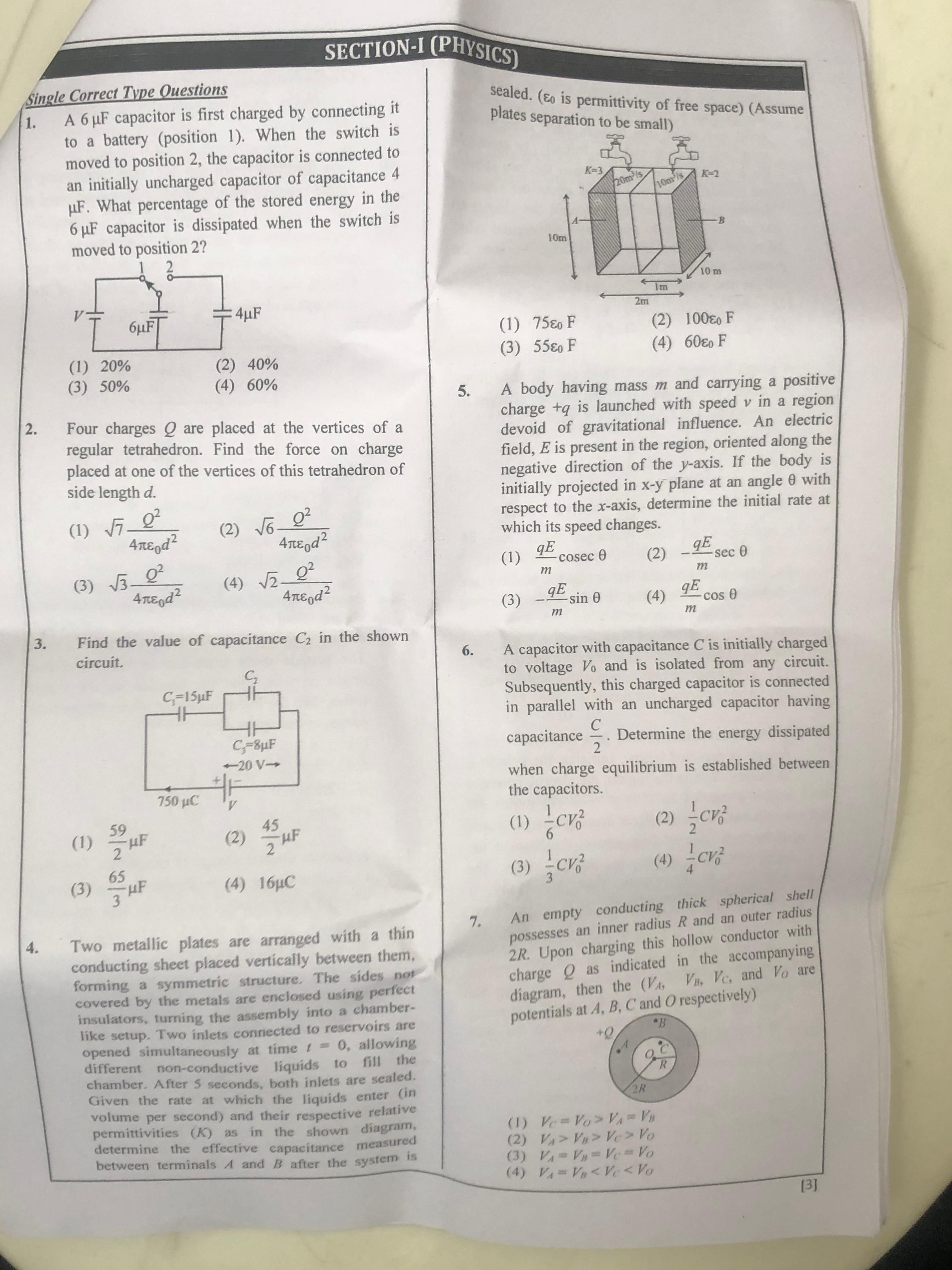Question
Question: A 6 µF capacitor is first charged by connecting it to a battery (position 1). When the switch is mov...
A 6 µF capacitor is first charged by connecting it to a battery (position 1). When the switch is moved to position 2, the capacitor is connected to an initially uncharged capacitor of capacitance 4 µF. What percentage of the stored energy in the 6 µF capacitor is dissipated when the switch is moved to position 2?

20%
40%
50%
60%
40%
Solution
Let the initial voltage of the battery be VB. The 6 µF capacitor (C1) is charged to this voltage. Initial charge on C1: Q1=C1VB=6μF⋅VB. Initial energy stored in C1: U1=21C1VB2=21(6μF)VB2.
When the switch is moved to position 2, the 6 µF capacitor is connected in parallel with the uncharged 4 µF capacitor (C2). The total charge Qtotal=Q1=6μF⋅VB is conserved. The equivalent capacitance of the parallel combination is Ceq=C1+C2=6μF+4μF=10μF. The final common voltage across both capacitors is Vf=CeqQtotal=10μF6μF⋅VB=0.6VB.
The final energy stored in the system is Uf=21CeqVf2=21(10μF)(0.6VB)2=21(10μF)(0.36VB2)=21(3.6μF)VB2.
The energy dissipated is the difference between the initial energy of the 6 µF capacitor and the final energy of the system: Edissipated=U1−Uf=21(6μF)VB2−21(3.6μF)VB2=21(2.4μF)VB2.
The percentage of the stored energy in the 6 µF capacitor that is dissipated is: Percentage Dissipated=U1Edissipated×100%=21(6μF)VB221(2.4μF)VB2×100%=62.4×100%=0.4×100%=40%
